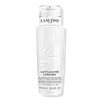What's inside
What's inside
 Key Ingredients
Key Ingredients

No key ingredients
 Benefits
Benefits

 Concerns
Concerns

 Ingredients Side-by-side
Ingredients Side-by-side

Water
Skin ConditioningDicaprylyl Carbonate
EmollientCaprylic/Capric Triglyceride
MaskingGlycerin
HumectantPropanediol
SolventC14-22 Alcohols
Emulsion StabilisingPolysorbate 60
EmulsifyingC12-20 Alkyl Glucoside
EmulsifyingParfum
MaskingSodium Citrate
BufferingPolyacrylate Crosspolymer-6
Emulsion StabilisingCaprylyl Glycol
EmollientCitric Acid
BufferingDisodium EDTA
Ethylhexylglycerin
Skin ConditioningXanthan Gum
EmulsifyingMelissa Officinalis Leaf Extract
Skin ConditioningT-Butyl Alcohol
PerfumingGentiana Lutea Extract
EmollientMaltodextrin
AbsorbentMoringa Oleifera Seed Extract
Skin ConditioningWater, Dicaprylyl Carbonate, Caprylic/Capric Triglyceride, Glycerin, Propanediol, C14-22 Alcohols, Polysorbate 60, C12-20 Alkyl Glucoside, Parfum, Sodium Citrate, Polyacrylate Crosspolymer-6, Caprylyl Glycol, Citric Acid, Disodium EDTA, Ethylhexylglycerin, Xanthan Gum, Melissa Officinalis Leaf Extract, T-Butyl Alcohol, Gentiana Lutea Extract, Maltodextrin, Moringa Oleifera Seed Extract
Water
Skin ConditioningParaffinum Liquidum
EmollientIsopropyl Myristate
EmollientPropylene Glycol
HumectantZea Mays Germ Oil
EmollientLecithin
EmollientCyclodextrin
AbsorbentHydroxycitronellal
PerfumingHydroxyisohexyl 3-Cyclohexene Carboxaldehyde
MaskingPhenoxyethanol
PreservativeWheat Germ Glycerides
EmollientFaex
Skin ConditioningEthylparaben
PreservativeTriethanolamine
BufferingMel
EmollientPolysorbate 20
EmulsifyingLimonene
PerfumingMannitol
HumectantPentaerythrityl Tetra-Di-T-Butyl Hydroxyhydrocinnamate
AntioxidantLinalool
PerfumingBenzyl Alcohol
PerfumingBenzyl Benzoate
AntimicrobialBenzyl Salicylate
PerfumingChondrus Crispus
MaskingAlpha-Isomethyl Ionone
PerfumingCarbomer
Emulsion StabilisingGeraniol
PerfumingDisodium Cocoamphodiacetate
CleansingDisodium Succinate
MaskingMethylparaben
PreservativeButylphenyl Methylpropional
PerfumingCitronellol
PerfumingCoumarin
PerfumingPrunus Amygdalus Dulcis Protein
Skin ConditioningHexyl Cinnamal
PerfumingGlycerin
HumectantParfum
MaskingWater, Paraffinum Liquidum, Isopropyl Myristate, Propylene Glycol, Zea Mays Germ Oil, Lecithin, Cyclodextrin, Hydroxycitronellal, Hydroxyisohexyl 3-Cyclohexene Carboxaldehyde, Phenoxyethanol, Wheat Germ Glycerides, Faex, Ethylparaben, Triethanolamine, Mel, Polysorbate 20, Limonene, Mannitol, Pentaerythrityl Tetra-Di-T-Butyl Hydroxyhydrocinnamate, Linalool, Benzyl Alcohol, Benzyl Benzoate, Benzyl Salicylate, Chondrus Crispus, Alpha-Isomethyl Ionone, Carbomer, Geraniol, Disodium Cocoamphodiacetate, Disodium Succinate, Methylparaben, Butylphenyl Methylpropional, Citronellol, Coumarin, Prunus Amygdalus Dulcis Protein, Hexyl Cinnamal, Glycerin, Parfum
Ingredients Explained
These ingredients are found in both products.
Ingredients higher up in an ingredient list are typically present in a larger amount.
Glycerin is already naturally found in your skin. It helps moisturize and protect your skin.
A study from 2016 found glycerin to be more effective as a humectant than AHAs and hyaluronic acid.
As a humectant, it helps the skin stay hydrated by pulling moisture to your skin. The low molecular weight of glycerin allows it to pull moisture into the deeper layers of your skin.
Hydrated skin improves your skin barrier; Your skin barrier helps protect against irritants and bacteria.
Glycerin has also been found to have antimicrobial and antiviral properties. Due to these properties, glycerin is often used in wound and burn treatments.
In cosmetics, glycerin is usually derived from plants such as soybean or palm. However, it can also be sourced from animals, such as tallow or animal fat.
This ingredient is organic, colorless, odorless, and non-toxic.
Glycerin is the name for this ingredient in American English. British English uses Glycerol/Glycerine.
Learn more about GlycerinParfum is a catch-all term for an ingredient or more that is used to give a scent to products.
Also called "fragrance", this ingredient can be a blend of hundreds of chemicals or plant oils. This means every product with "fragrance" or "parfum" in the ingredients list is a different mixture.
For instance, Habanolide is a proprietary trade name for a specific aroma chemical. When used as a fragrance ingredient in cosmetics, most aroma chemicals fall under the broad labeling category of “FRAGRANCE” or “PARFUM” according to EU and US regulations.
The term 'parfum' or 'fragrance' is not regulated in many countries. In many cases, it is up to the brand to define this term.
For instance, many brands choose to label themselves as "fragrance-free" because they are not using synthetic fragrances. However, their products may still contain ingredients such as essential oils that are considered a fragrance by INCI standards.
One example is Calendula flower extract. Calendula is an essential oil that still imparts a scent or 'fragrance'.
Depending on the blend, the ingredients in the mixture can cause allergies and sensitivities on the skin. Some ingredients that are known EU allergens include linalool and citronellol.
Parfum can also be used to mask or cover an unpleasant scent.
The bottom line is: not all fragrances/parfum/ingredients are created equally. If you are worried about fragrances, we recommend taking a closer look at an ingredient. And of course, we always recommend speaking with a professional.
Learn more about ParfumWater. It's the most common cosmetic ingredient of all. You'll usually see it at the top of ingredient lists, meaning that it makes up the largest part of the product.
So why is it so popular? Water most often acts as a solvent - this means that it helps dissolve other ingredients into the formulation.
You'll also recognize water as that liquid we all need to stay alive. If you see this, drink a glass of water. Stay hydrated!
Learn more about Water